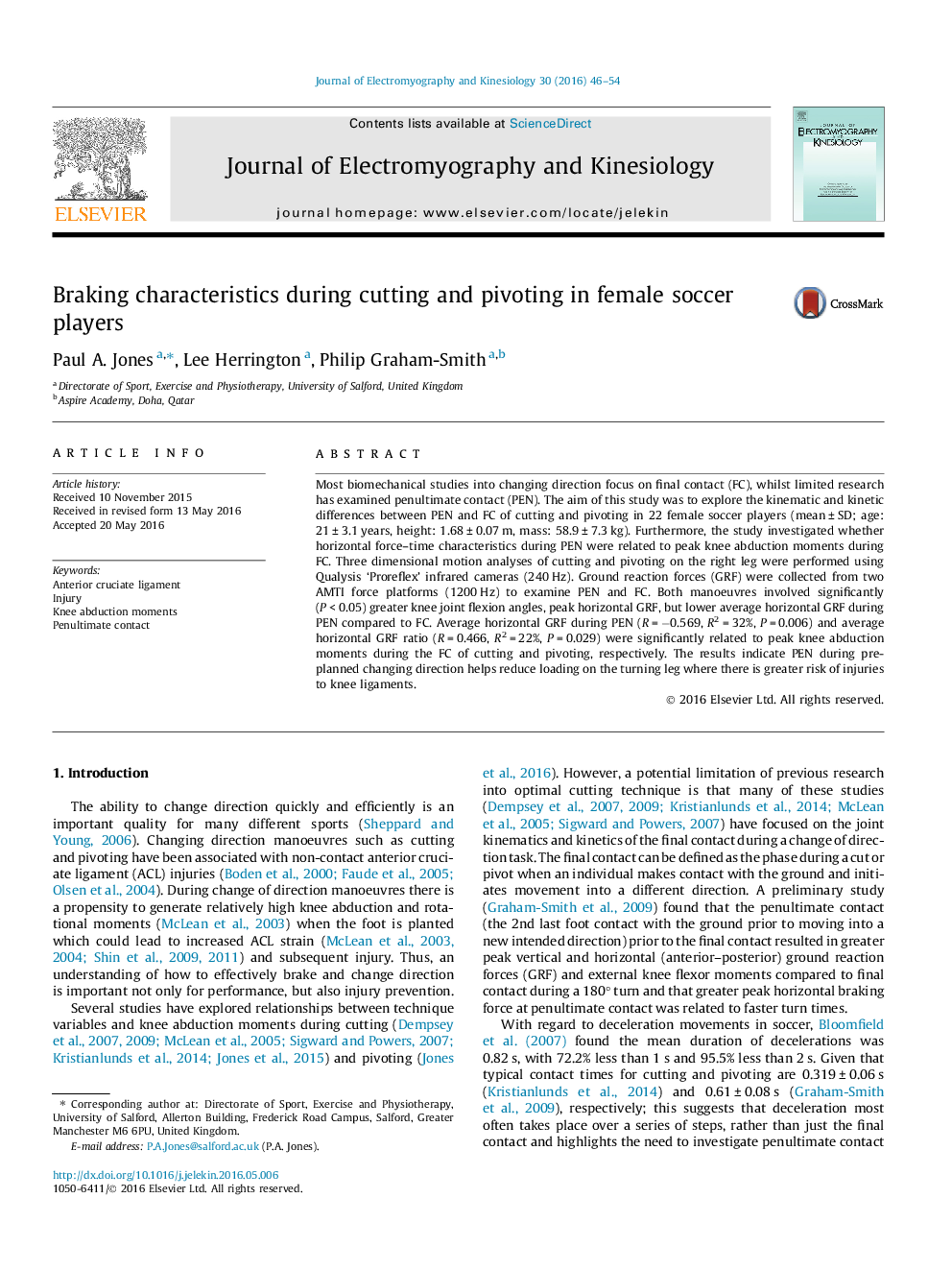| Article ID | Journal | Published Year | Pages | File Type |
|---|---|---|---|---|
| 4064378 | Journal of Electromyography and Kinesiology | 2016 | 9 Pages |
Most biomechanical studies into changing direction focus on final contact (FC), whilst limited research has examined penultimate contact (PEN). The aim of this study was to explore the kinematic and kinetic differences between PEN and FC of cutting and pivoting in 22 female soccer players (mean ± SD; age: 21 ± 3.1 years, height: 1.68 ± 0.07 m, mass: 58.9 ± 7.3 kg). Furthermore, the study investigated whether horizontal force–time characteristics during PEN were related to peak knee abduction moments during FC. Three dimensional motion analyses of cutting and pivoting on the right leg were performed using Qualysis ‘Proreflex’ infrared cameras (240 Hz). Ground reaction forces (GRF) were collected from two AMTI force platforms (1200 Hz) to examine PEN and FC. Both manoeuvres involved significantly (P < 0.05) greater knee joint flexion angles, peak horizontal GRF, but lower average horizontal GRF during PEN compared to FC. Average horizontal GRF during PEN (R = −0.569, R2 = 32%, P = 0.006) and average horizontal GRF ratio (R = 0.466, R2 = 22%, P = 0.029) were significantly related to peak knee abduction moments during the FC of cutting and pivoting, respectively. The results indicate PEN during pre-planned changing direction helps reduce loading on the turning leg where there is greater risk of injuries to knee ligaments.
